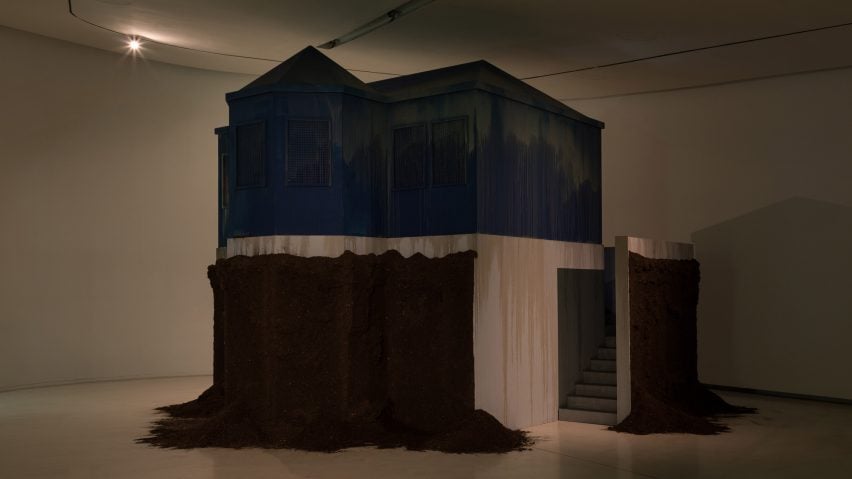Portuguese artists João Pedro Vale and Nuno Alexandre Ferreira have erected a two-storey building inside the MAAT in Lisbon, filled with references to "dissident forms of sexuality".
Visitors are invited to enter the dark, mysterious structure, where they find a two-storey interior containing what looks like the cells and wash room of a prison, but which is also reminiscent of gay cruising venues.
Titled Loving as the Road Begins, the installation draws comparisons between the constructs of imprisonment and the realities of queer existence.
"The artists juxtapose a variety of opposing references which conjure up images of impurity and sanitation, illness and cure, crime and punishment, associating incarceration structures with forbidden existences," reads an exhibition overview.
The project developed through Vale and Ferreira's research into the late surrealist poet and painter Mário Cesariny.
During a residency at La Cité Internationale des Arts in Paris, the pair stayed in an apartment close to the monument, Saint-Jacques Tower. They recognised it as the cover image of Cesariny's book, A Cidade Queimada, or Burnt City.
Cesariny wrote the book in 1964, during a two-month incarceration at Fresnes prison, where he was sent after being arrested for soliciting a police officer in a Paris cinema and accused of gross indecency.
The poet's imprisonment is believed by many to have been persecution, as a result of his so-called vagrancy – a derogatory term used at the time to describe homosexuals. So Vale and Ferreira felt it would make sense to take a close look at this time in his life.
Given Cesariny's obsession with the gothic tower and its garden, the pair designed the installation to look like a building found in the grounds.
They imagined that this simple structure, containing a ground floor and a basement, might have served as a living space or rest area for the garden watchman, or as a store room for tools. It also contained public toilets – a type of space often used in gay cruising.
At the MAAT, this building is recreated as a two-storey structure, accessed via a staircase that leads up to the first floor.
Inside are dark-painted spaces, dimly lit by red and white neon lights. Walls are covered in graffiti, and sections of the space are partitioned off into cells.
One space contains latrines, while another contains showers. There is also a dressing table covered in bottles and an old radio.
Downstairs, water from the showers above drips down through the gridded metal ceiling, into a large pool. Posed poster images of naked men cover the wall, forming part of the graffiti artwork.
The exhibition was curated by Inês Grosso. It is not the first to shine a light on the physical spaces of gay cruising.
The Cruising Pavilion – previously shown in Venice and now exhibiting in Stockholm – also highlights the role that sex plays in architecture and interiors.
Loving as the Road Begins is on show at MAAT until 20 April 2020.

